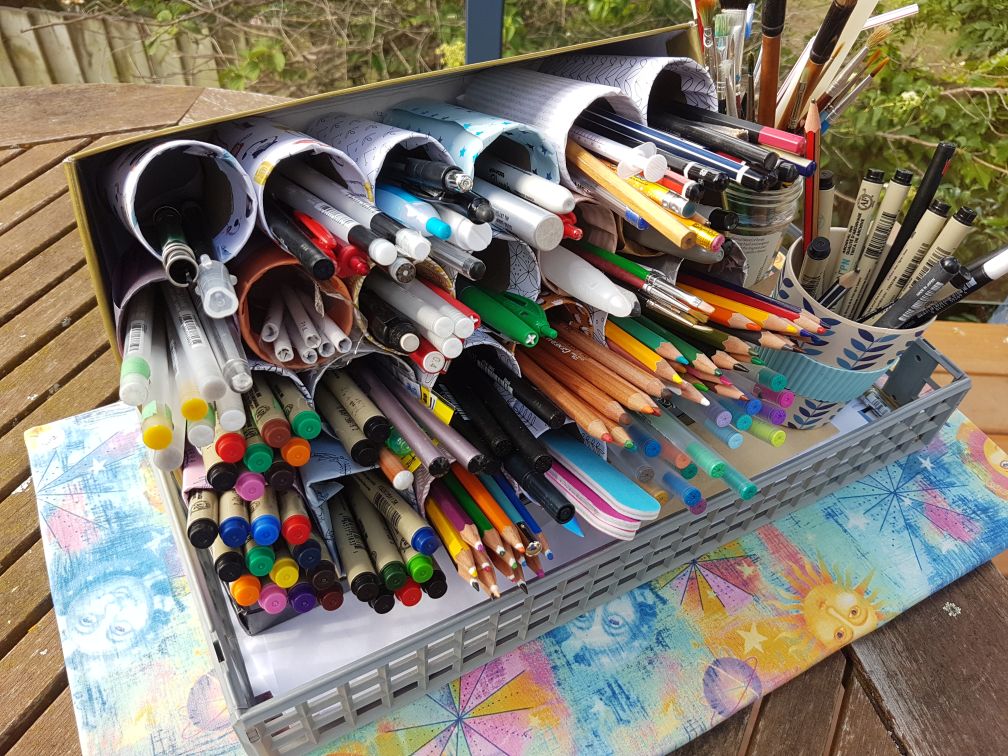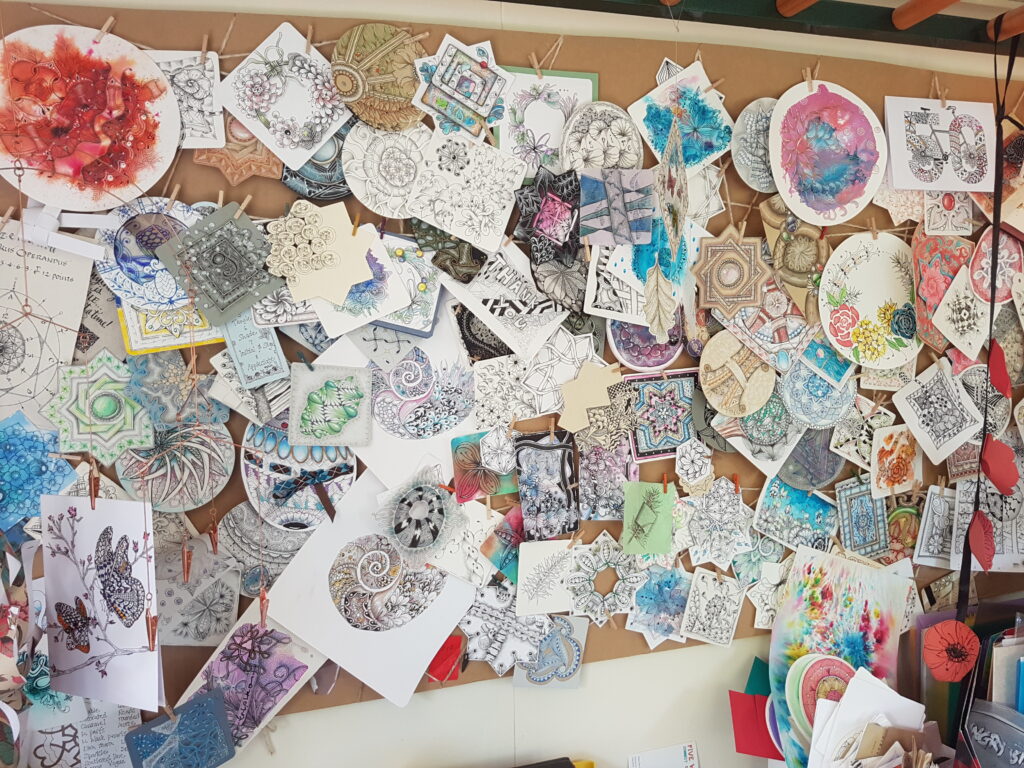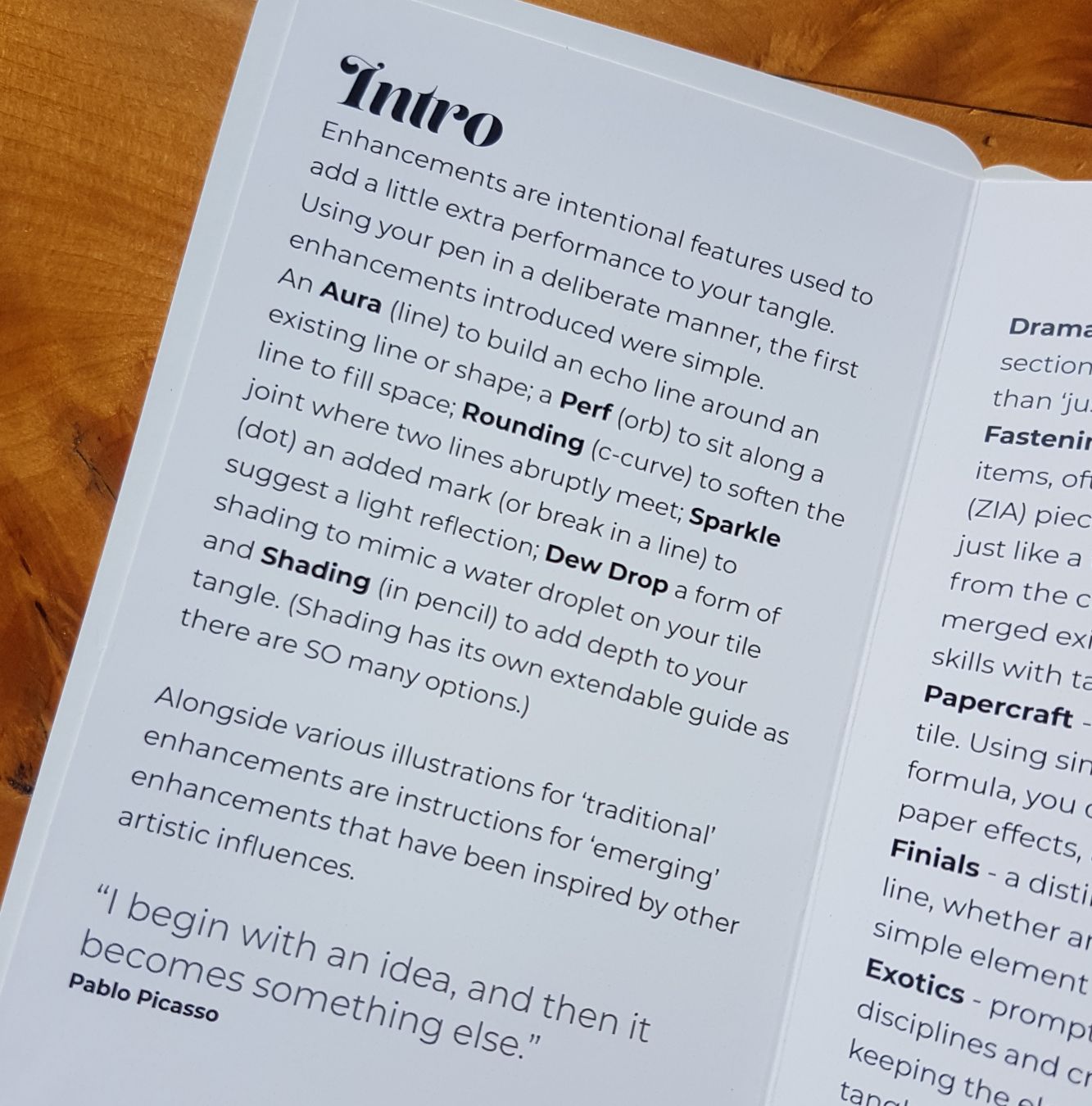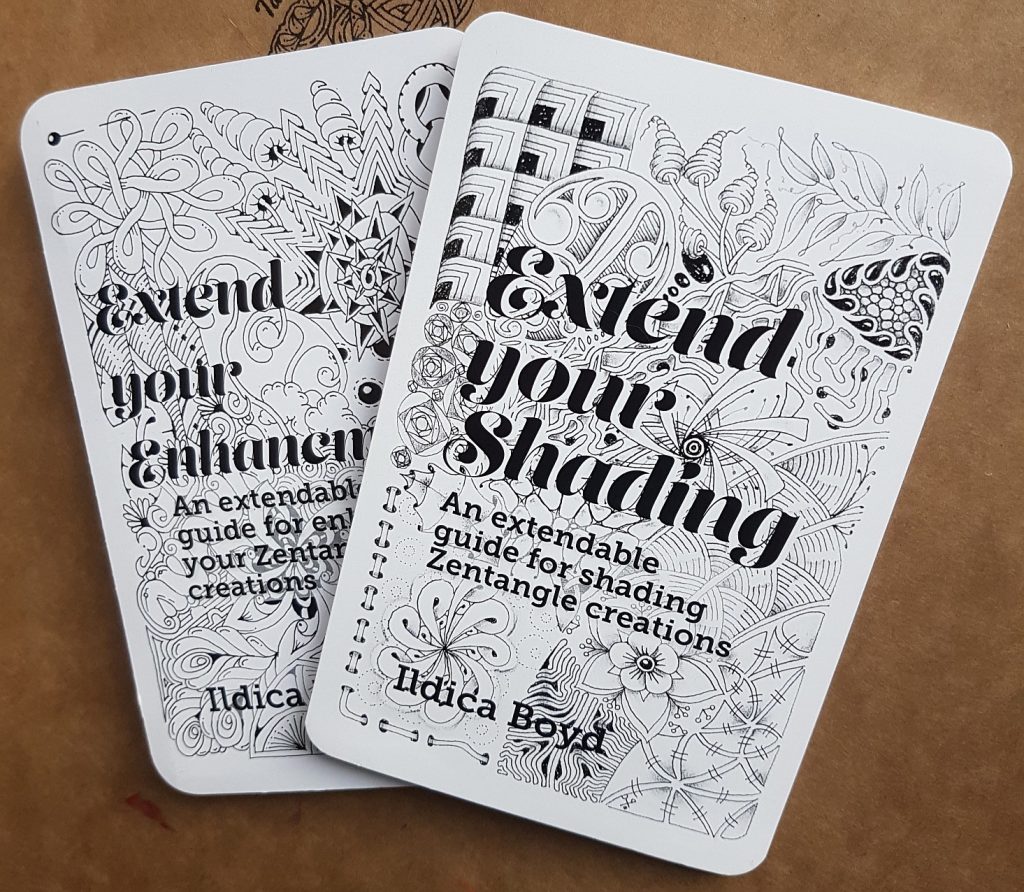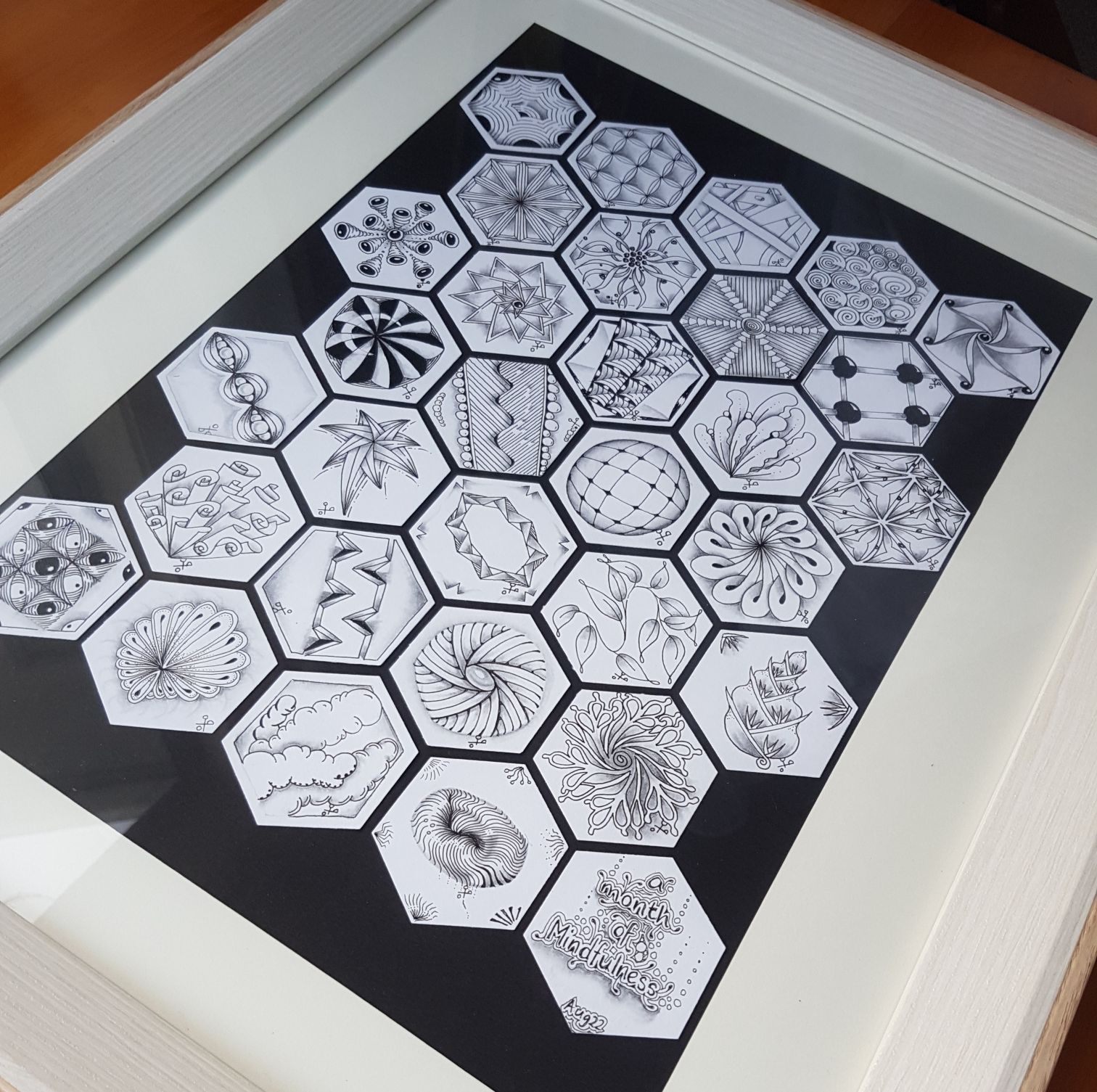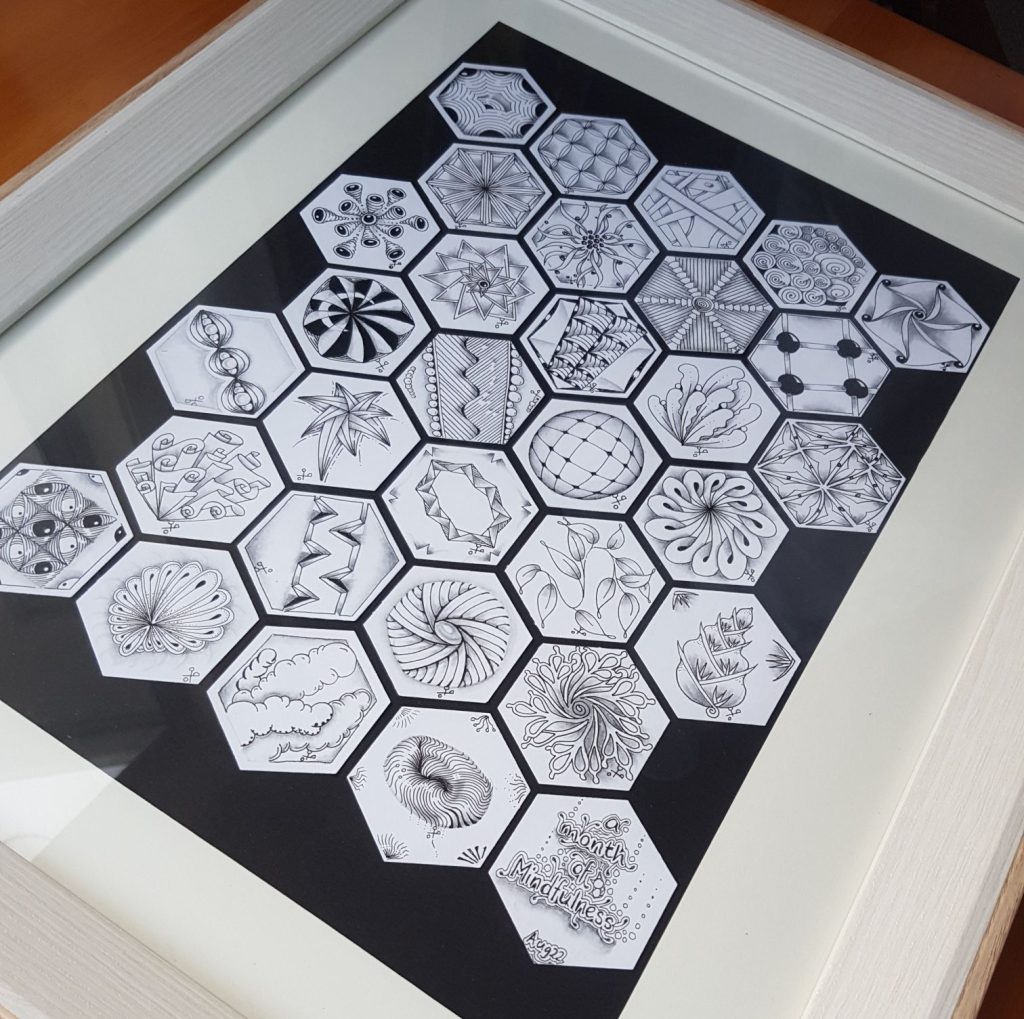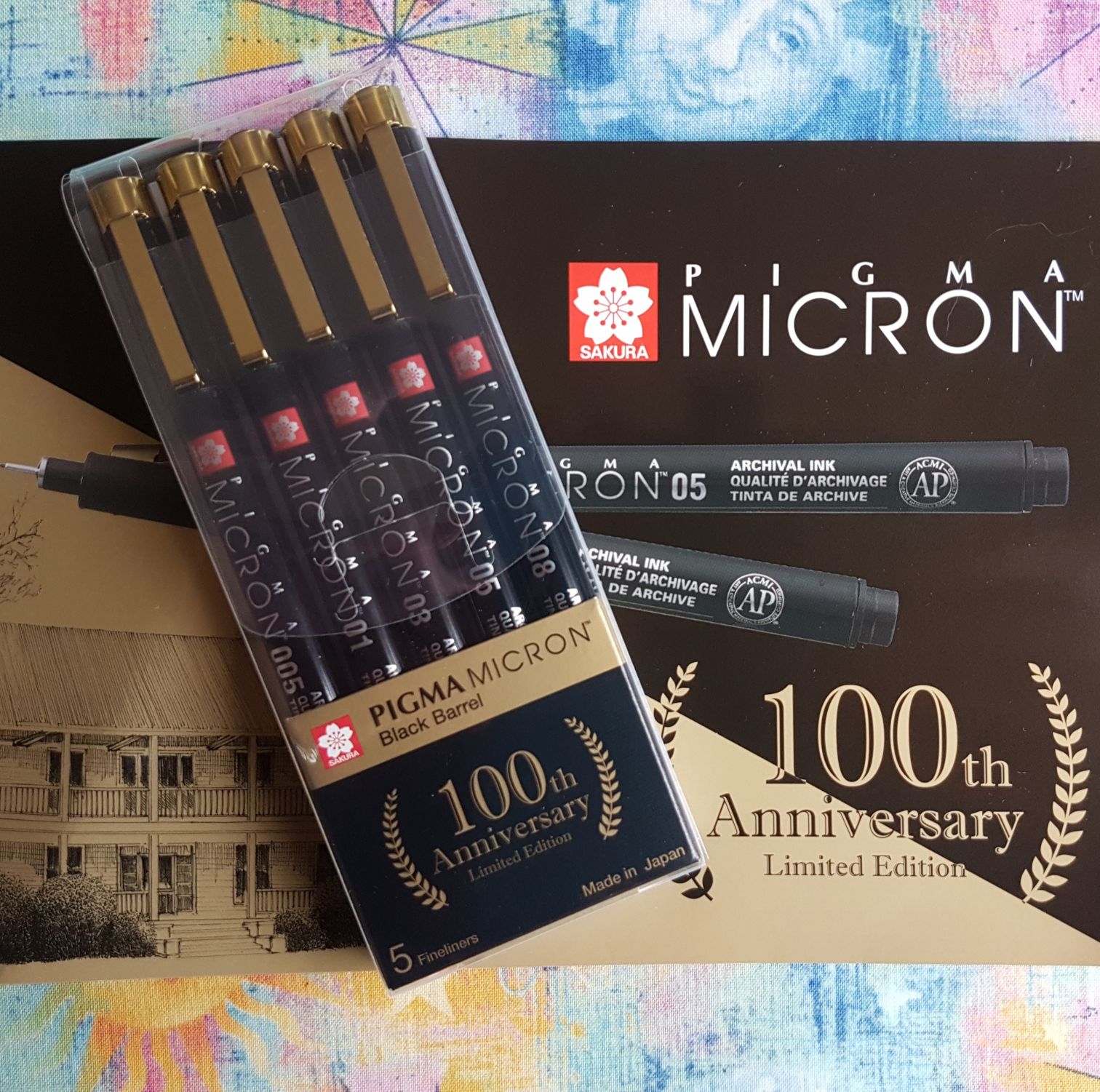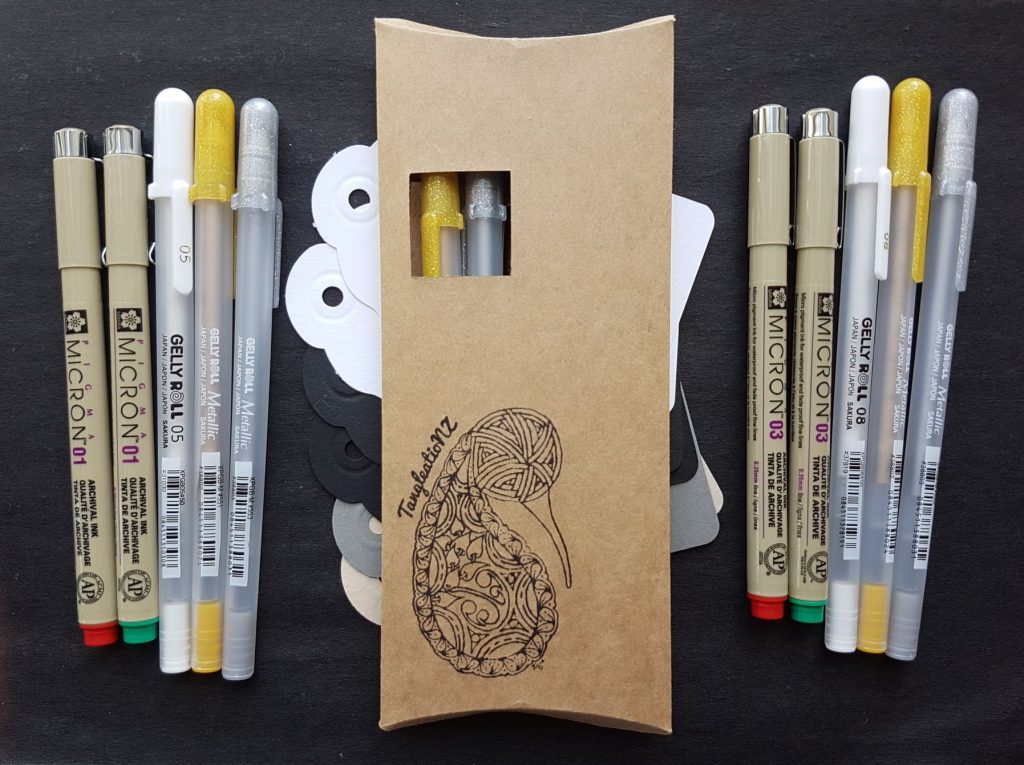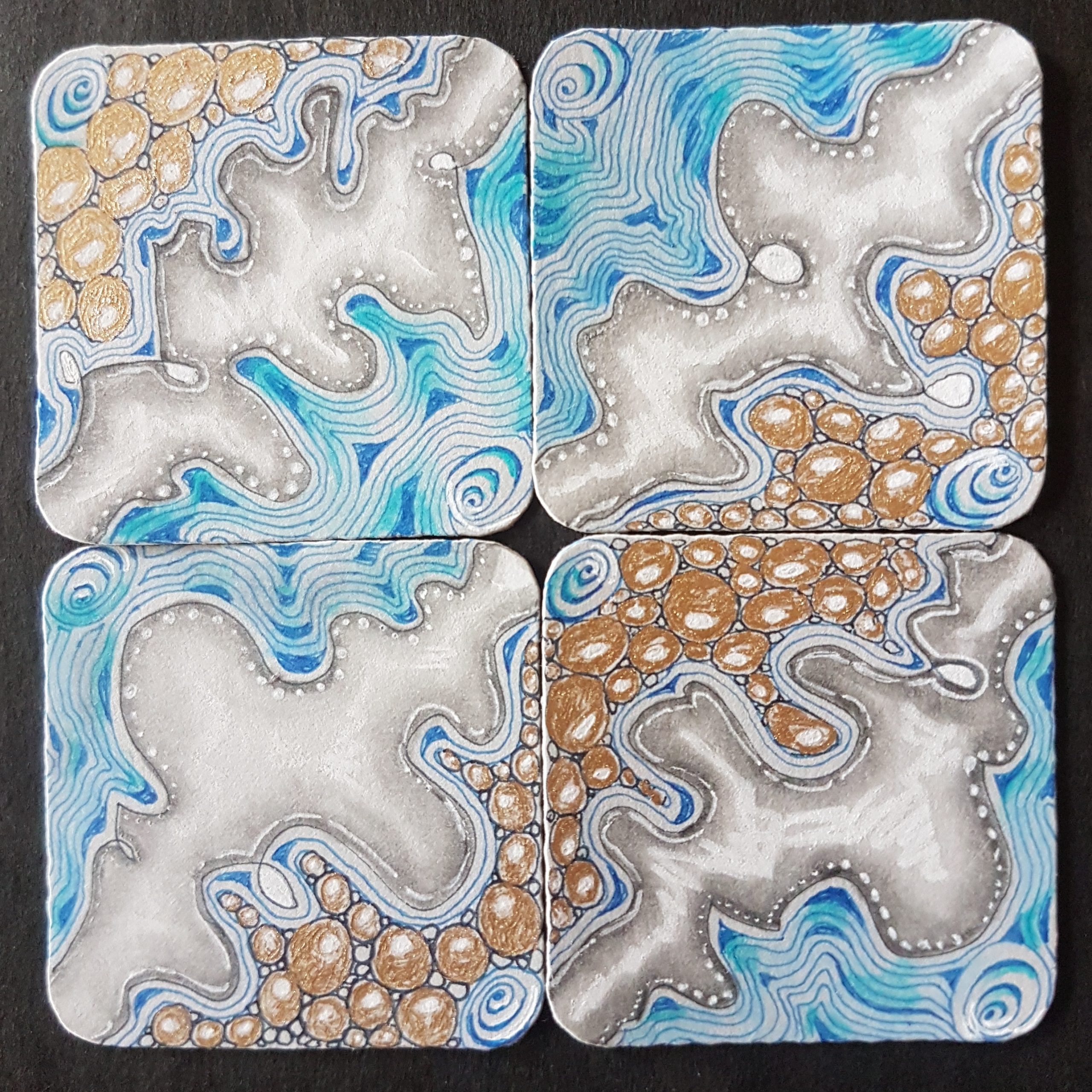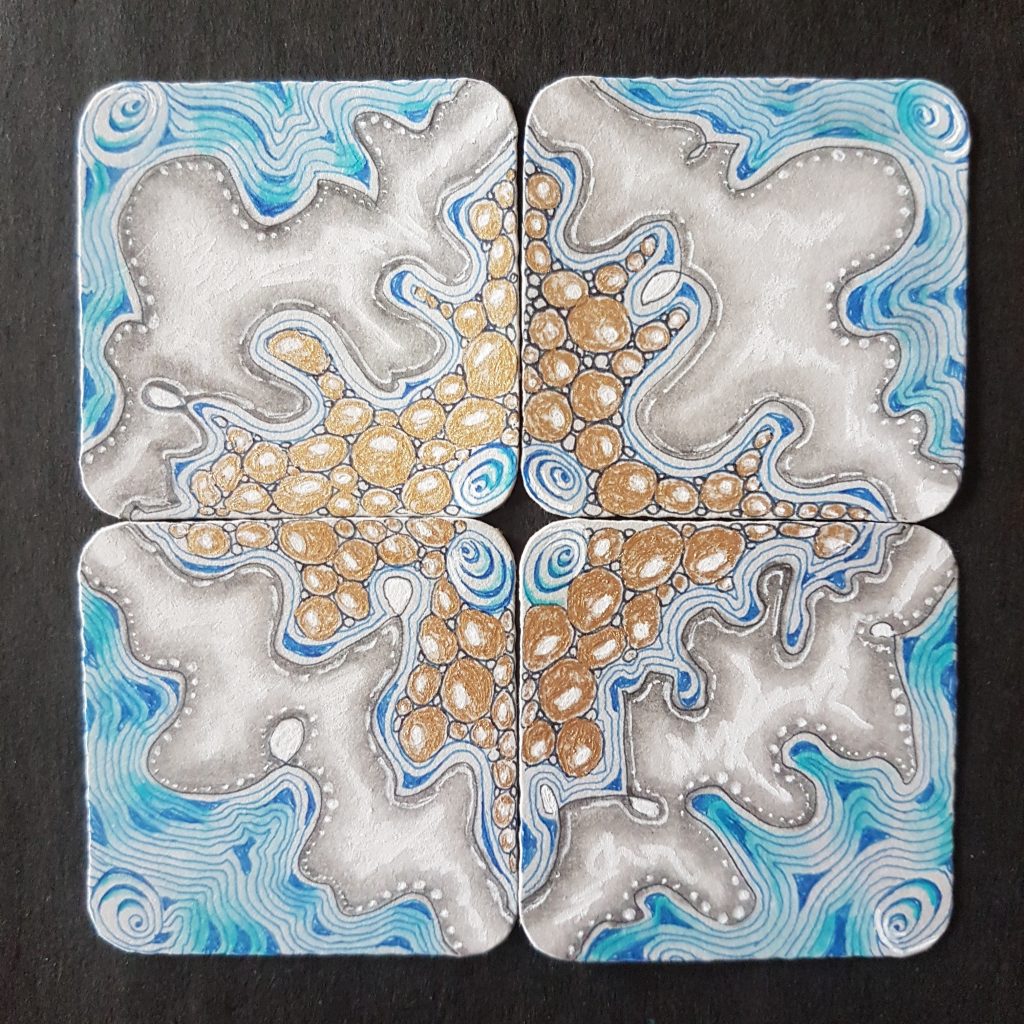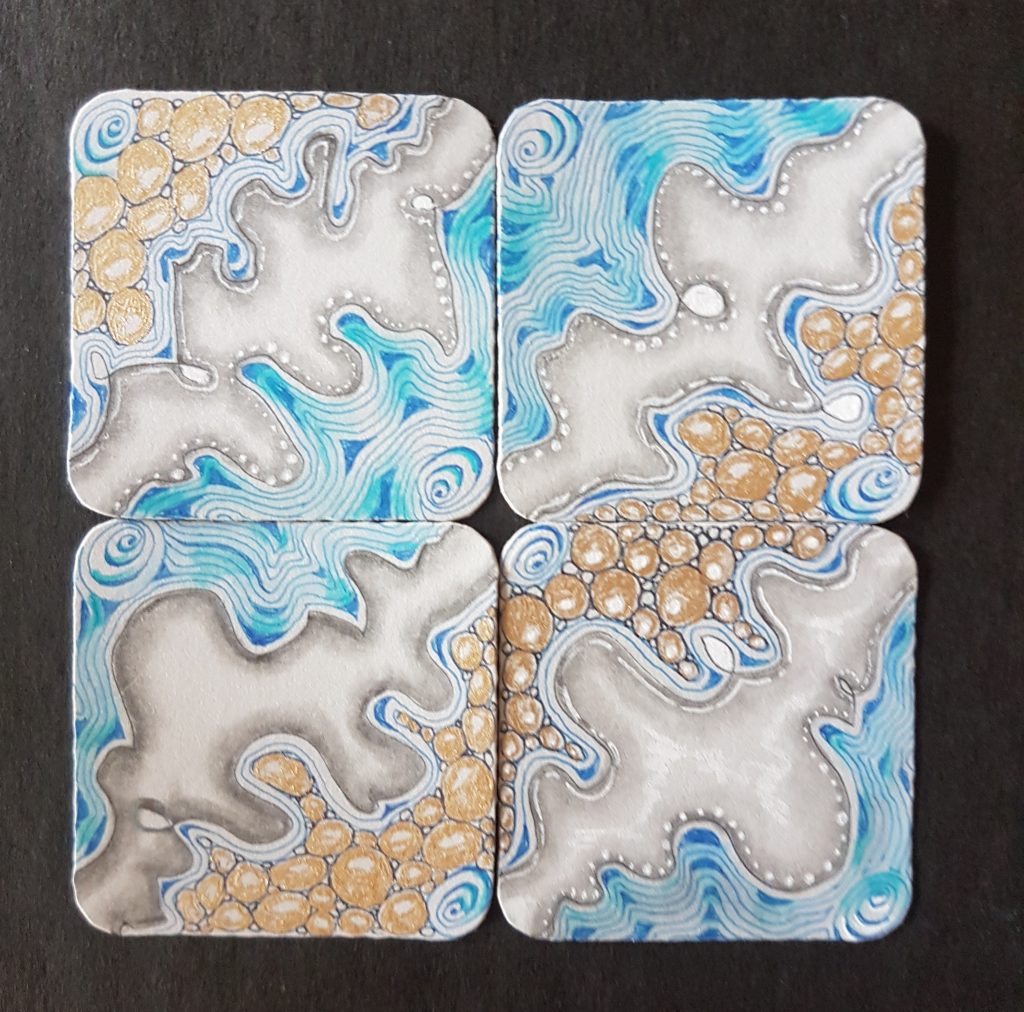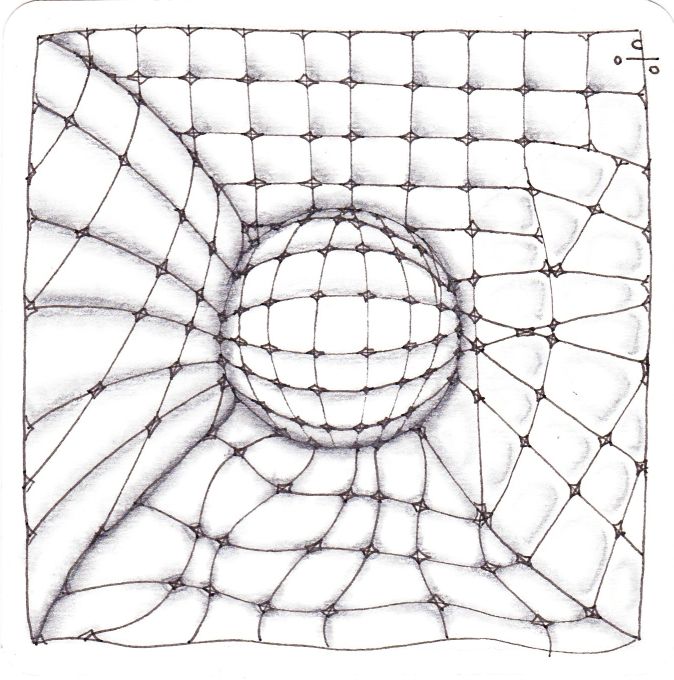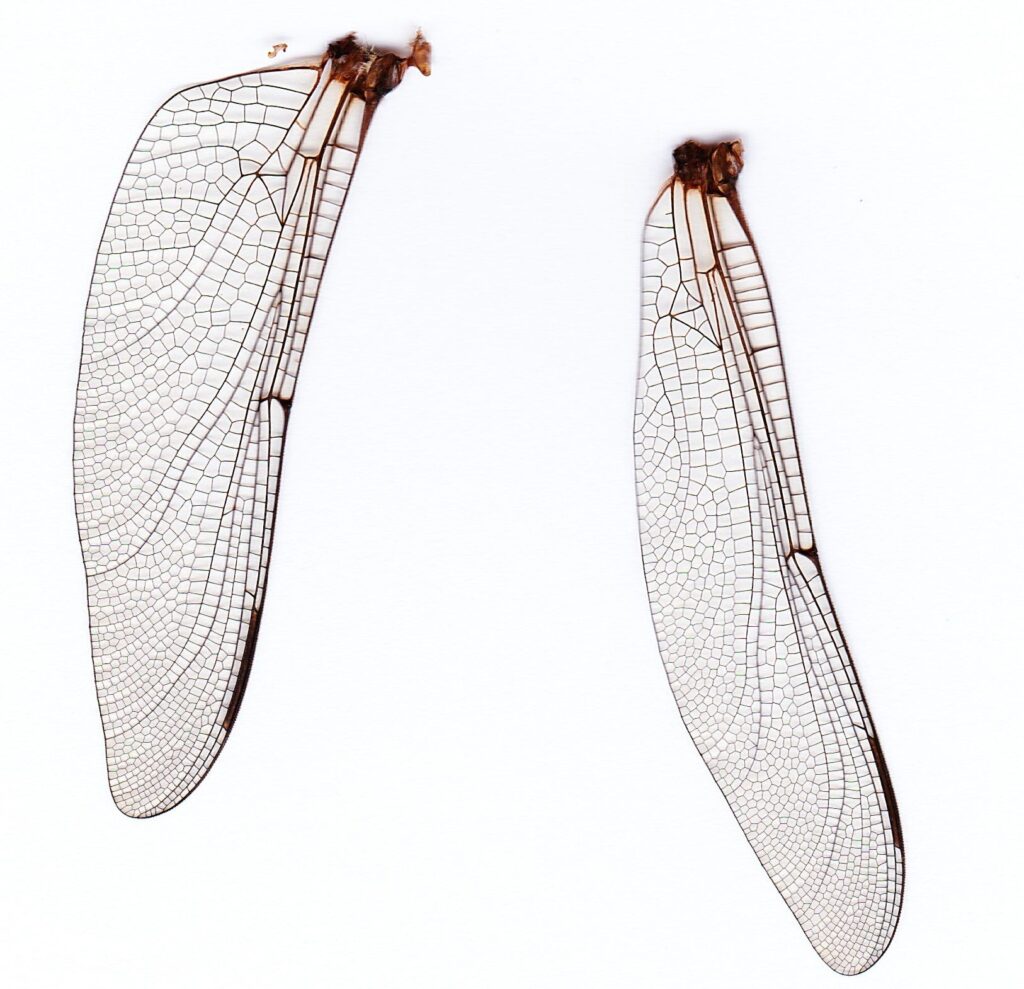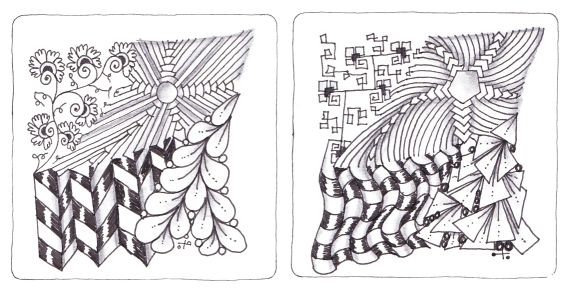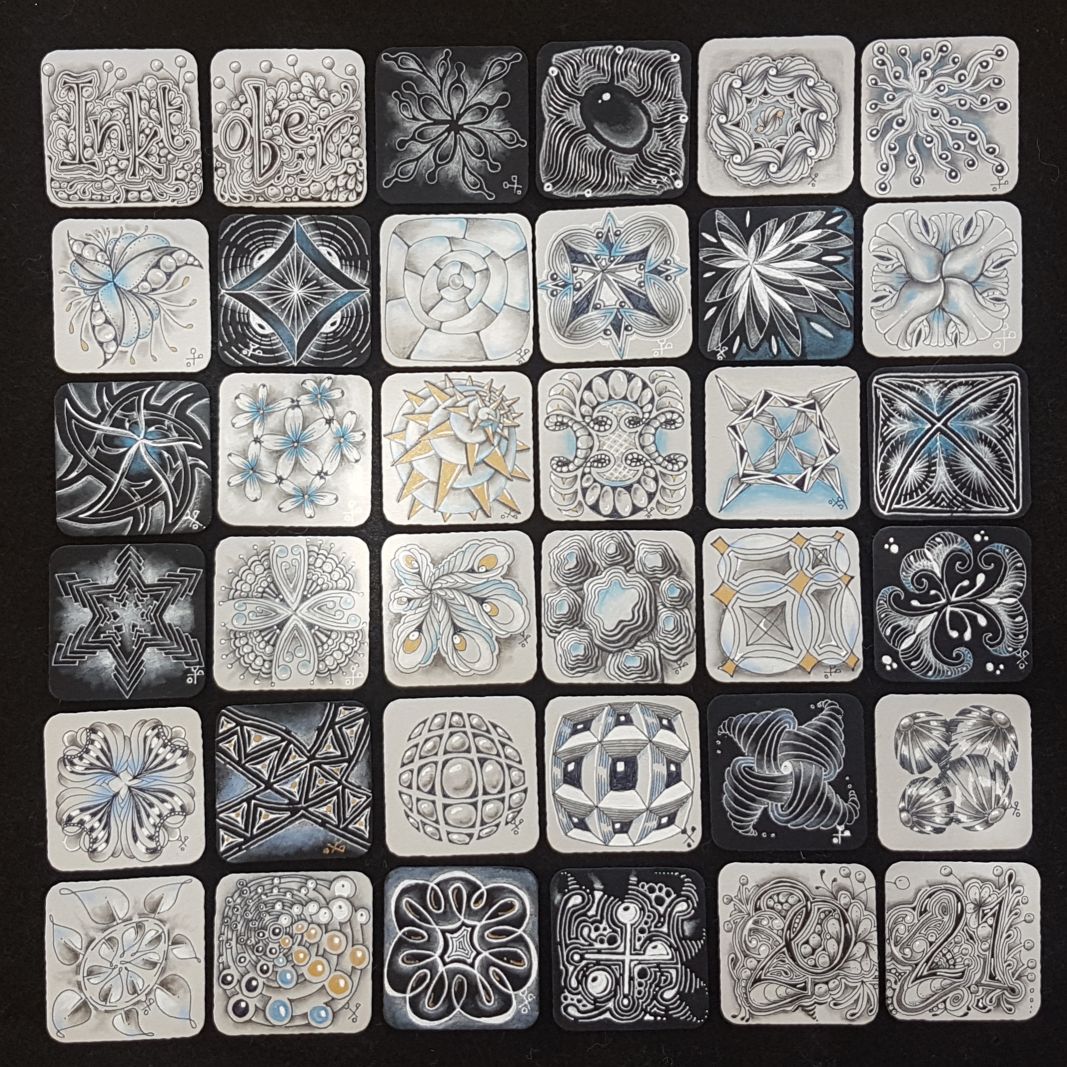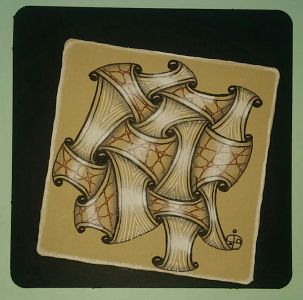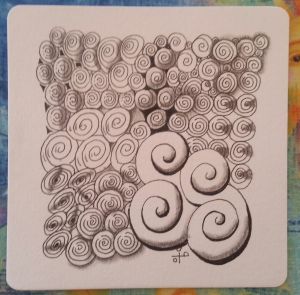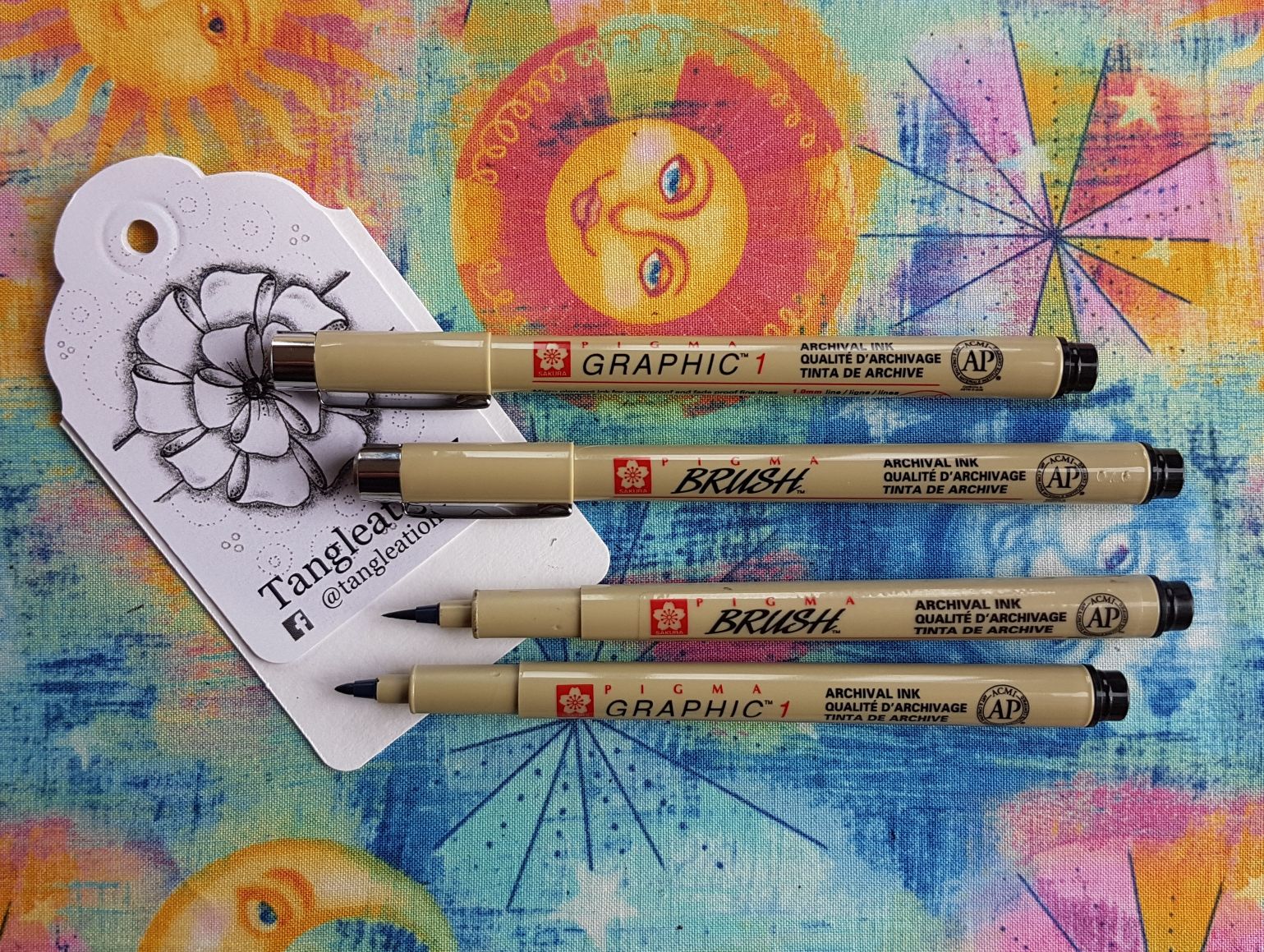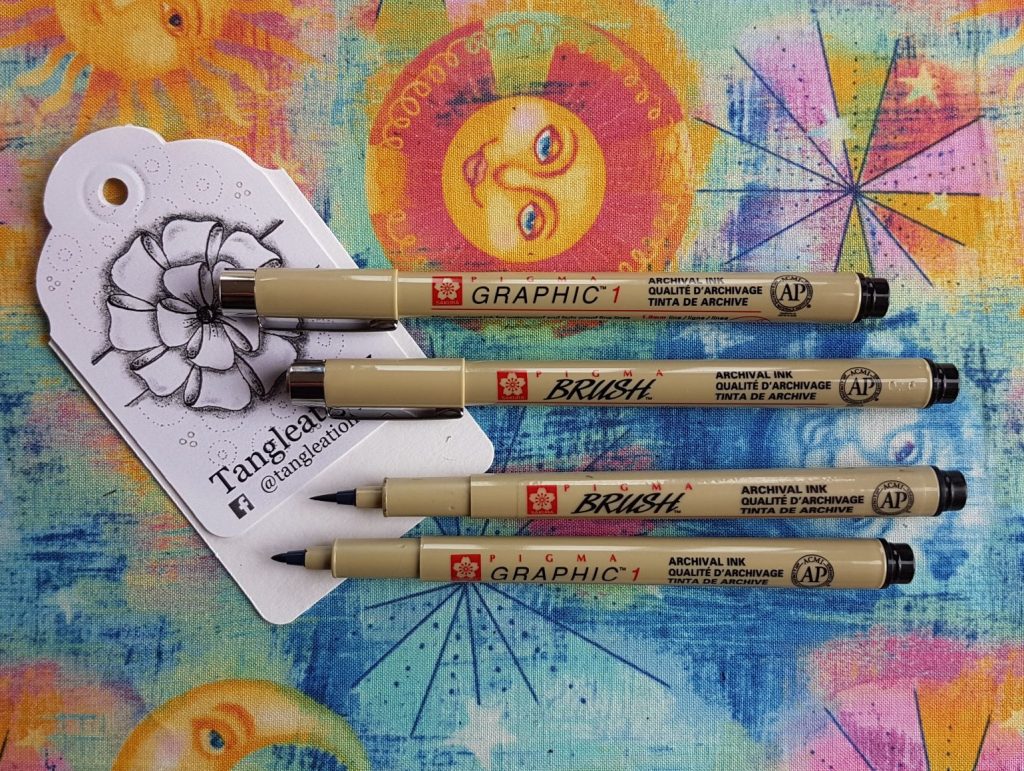Microns
Various widths in the Sakura range from 005 (super fine) to 12 (big and bold) I stock black from 005 to 08, and then two ‘drama’ pens a Graphic 1 (equals a 10) and a Brush pen, all with the same pigment based ink which sits on top of the paper rather than soak in. This archival ink is perfect for long lasting, and also means that once it is dry you can add a water based watercolour, pen, ink, Lindy’s Magicals medium etc and the pen ink won’t move from whether it was put down.
Most well known fine liners are pigment based (Sakura’s Micron Pigma, Staedtler’s Pigment Liner (with a squarer tip), Copic’s Multiliner, Derwent’s Graphik). Using a pigment based ink will give a crisp non-bleeding line on most types of paper, and once it has dried, it won’t be moved, no matter what you put on it (which makes it an excellent thing to note when doing mixed media work). These pens are more expensive due to the pigment colourant, but they have a long life and are pretty fade resistant.
For more information on pen care check out this article
For more info on ink types check out this article
Gelly Roll Ranges
There are many variety and makes of Gelly rolls on the market, some of the cheaper ranges don’t have a lot of ink within the pen, but if you find you don’t use them much perhaps this is away to go. Various different Sakura ranges to choose from which I have described below, but also Pentel do the Hybrid Gel (gold silver and white) Uni Signo is another popular brand – Gelly rolls are more prone to drying up, so store them flat and out of extreme heat where possible. I have described below are the different Sakura ranges of Gelly Rolls.
Moonlight Gelly rolls
Solid colour works on coloured tiles as the name suggests gel based inks which use a pigment colour but not necessarily a fine line. The Sakura Gelly rolls I stock are many the white comes in a 05, 08, 10 weights, if you aren’t good at cleaning off the nib after use be aware of the 05 – the 08 and 10 are a bit more forgiving. Worth trying to make it a habit to clean off and roll round the ball in the nib and few times after use if you are working with a mixed media surface – after I have been doing this, I always seem to have endless pen marks over the back of my left hand!
Metallic Gelly rolls
Same as the moonlight range of solid colours, but these pens give a solid smooth metallic finish – perfect for a shiny metallic highlighting or filling in a line. Great for larger areas too.
Stardust Gelly rolls
These gelly roll pens from Sakura give a twinkling effect. While the Metallic range provide a more uniform pearl finish, the Stardusts’ twinkle! Brought about by tiny fragments of glass that reflect the light, these inks constantly shimmer.
Line width is 0.5mm, with the usual smooth writing, dense ink and constant ink flow you expect from Sakura. These are stunning for birthday cards and artwork that needs a bit of dazzling! I might add if you photograph it, the twinkling doesn’t come out, you might need some special filter to show that off!
Shadow / Luxue Gelly rolls
They flow out as a colour – Pink, Lavender, Green, Blue or Black, but as they dry, (give them 2-3 minutes to fully work,) they dry in gold or silver with a fine shadow of the original colour around the outside. They show up best on a more absorbent paper. Smooth writing, constant ink flow to the end, waterproof, fade resistant and chemical proof. A little wider than the rest of the range – mainly because of the two colour effect.
Glaze Gelly rolls
Also known as Soufflé pens, these are the ideal pens for working on the TranzlucenZ tiles! These Sakura pens give a 3D stained glass effect, and it’s possible to use them successfully on non-porous surfaces such as plastics, glass and coated papers. Line width 0.6mm. For best effect work slowly and leave for 2-3 minutes to dry completely, and build the 3D effect. These pens go on semi transparent, which may be a bit different to other pens you use, so give it time to dry and build the colour. They come with a little inner cap as well, I tend to keep these on after each use, as I don’t use them for every day use. Note there is a ‘clear’ glaze pen which can be good for putting over coloured pencil etc, so can be a useful tool for using with other mediums to get a glazed final look.
For more information on gelly roll pen care check out this article
Pencils
Traditional Graphite and white pencils
Most people adore their short cute original Zentangle – perfect for fitting into the palm of your hand to keep the point just where you want it, it is a nice quality HB. It’s pair for highlighting (ideal on anything but white tile) the Zentangle white charcoal pencil. This is a pastel pencil (both of these are General’s pencil brand and are in most people’s Zentangle kits as they are small and easy to carry anywhere. I tend to stick mine in a double ended pencil extender when they get too short to handle, and so get life out of them until the very end. Some people (and that would be me included) as they are more confident about the shading may move to a 2B – I like the quality of the Staedtler Mars Lumograph range, but I know others who go down the 8B route – clearly they LOVE their shading. There is no one best pencil, people style, heaviness of the pencil pressure and paper can all make a difference to how it looks, so like paint, sometimes you need to pair a pencil with the paper you have – so a wee trip to the tester station in your local art shop is not a bad afternoon experimental trip!
If you want to write / label the back of photographs, a pencil is the best tool, not a pen so I found out.
Coloured Pencils
For beginning to work with coloured shading in your tangling, I recommend two options, coloured pastel pencils and water coloured pencils.
Pastel Pencils
If you go down the coloured pastel pencil route you will then need matching tortillons to pair with them, which is fine, but be warned they all come out purple in the end no matter how you try to keep them separate tones! I like Kohi Nor Gioconda range, I find the Faber Castell’s Pitt pastel quite hard, the General’s Pastel Chalks and the CretaColor Studoline pastel somewhere in the middle, so find what suits your pressure and paper. (and of course what range you can get hold of local to you!
(I like using the Gioconda pastel white for highlighting on coloured tiles too.)
Watercolour Pencils
Or buy yourself a set of 12 water-coloured pencils and a water brush, which you can then add the watercolour to the area you want the deepest colour and then use a little water to gradually pull some colour across an area. This is a fast technique and doesn’t require a fixative afterwards, but does need drying time. Be careful not to get your pencils wet otherwise you will result in a BIG dose of watercolour paint going on the tile – which may be what you want but just a warning. Easy to add water and blot off if you change your mind or feel it is too much, or when over a line you didn’t want to.
Once you have mastered the water colour pencil option, there is a more permanent ink solution in Derwent’s beautiful Inktense pencils – this is a pigment ink (so won’t fade, and you can add colour like the watercolour pencils, but like the name suggests, these are much stronger, so last for ages, and is often a case of collect one or two pencils at a time and build up a collection. Often with Zentangle work, you are limiting your colour palette anyway – to reduce the decision making, so this is not a bad acquisition method.
Inktense also come in a block form too, and I use these for colouring my wall tangling borders, as otherwise it would take me years to add the coloured borders! Water based, but when dry doesn’t move and easy to use your tangling pen over it.
Traditional Coloured pencils
There is quite a range out there, and if you are used and already have a range of coloured pencils then by all means use them for your tangling. I’ll admit I don’t use them a lot, but if I am going down a waxy pencil I use my Prismacolor set and if I am going down a less waxy coloured pencil, I use a Derwent Blender which I find is great to use on a traditional coloured pencil when used in a tangling context. Alternatively if you are struggling to blend, you can dip your pencil in a wee pottle of Vaseline (my chemist does a tiny handbag size pottle) and that is great medium to mix the colour – if a little less easy than the purpose built blender pencil!
Other Types of Pen
For working on Ceramic surface – I love the Edding Porcelain brush pens – 1-4mm width, if you are fine with a brush pen these are excellent.
For working on glass, ceramic, wood and metal – Sakura Identi pen, I stock these in black but they do come in limited range of other colours.
Wall Tangling – big scale tangling – the Edding 300 series – 1.5- 3mm tip, brilliant permanent marker, which doesn’t bleed on papers and is great for big scale tangling! I love these for the big work. works well on most surfaces (think tagging buildings) Although when I want to do a large amount of drama fill on something you’ll find there is always one lurking in my pencil tin! I have also had a lot of fun with a Posca pen for some permanent outdoor tangling over paint!
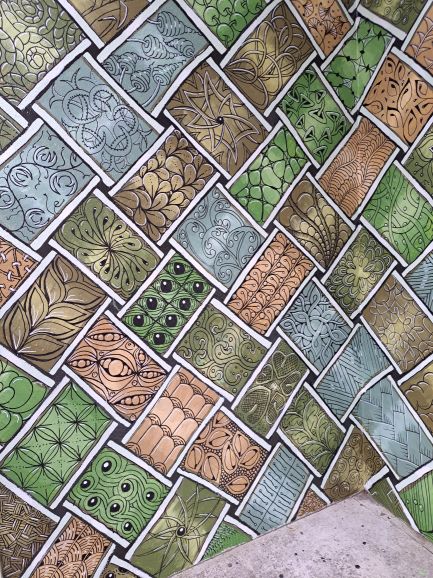
Talking of bigger scale and multi surfaces the Sakura Pen Touch in gold and silver are great tools, you need to shake them to mix the ink, – they are not a fine line tool at all, but great for large areas and they have an opaque ink that works on most surfaces- wood, plastic. glass, metal, leather, porcelain and rubber.
Colouring in – options here include Tombow Dual Brush Pens – for coloured pen work most people use these in the tangling world, very wide range and blendable, you can usually pick them up solo and add to your collection, and permanent ink. Again I sometimes use them on Wall Tangling canvases, with the Brush tip end, so highly versatile with the double ends and great for big colouring in. For finer work people may have a brush pen set or Staedler’s fine liner sets, which are affordable and a wide range of colours. Koi Brush pens are another lovely option suitable to diluting with a water brush for a blending technique.
If you think I have missed a surface to draw on and the pen that you find is great, let me know!

